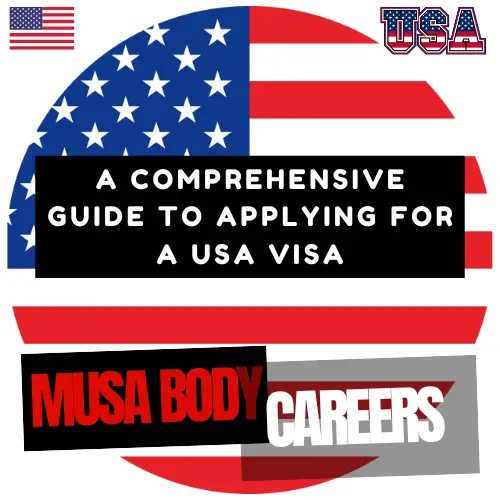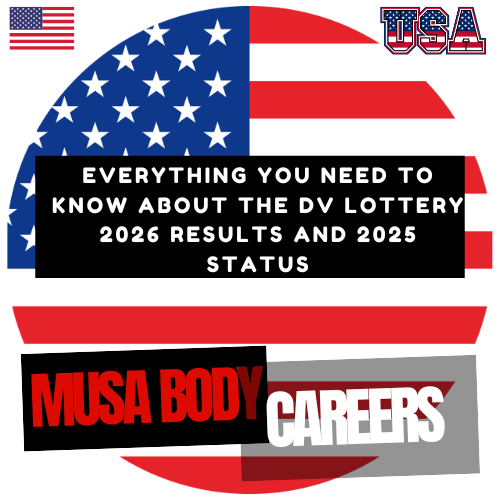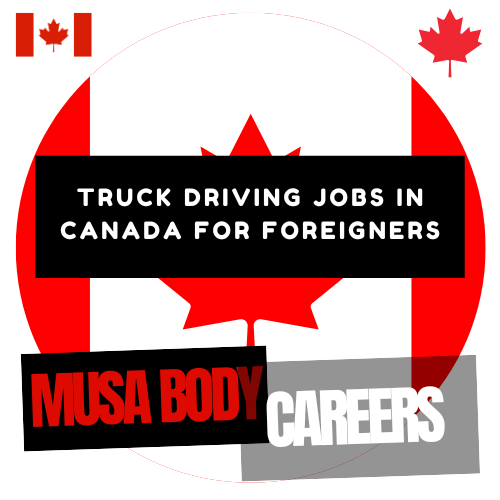Understanding the Types of USA Visas
When considering a journey to the United States, it is essential to identify the appropriate visa type that aligns with your travel or relocation intentions. The U.S. visa system is broadly categorized into two main types: non-immigrant visas and immigrant visas. Each category serves distinct purposes and comes with specific eligibility requirements.
Non-immigrant visas are designed for individuals who plan to enter the United States temporarily. This category includes various sub-types, such as tourist visas (B-2), which allow individuals to visit the U.S. for leisure, health treatment, or family visits. Business visas (B-1) cater to those looking to attend business meetings or conferences without taking up permanent residency. Additionally, student visas (F-1) are available for individuals pursuing academic studies in U.S. institutions, enabling them to reside in the country for the duration of their educational programs. Work-related visas (H-1B, L-1, etc.) are also included in this category, allowing temporary employment based on specialized skills and job offers from U.S. employers.
In contrast, immigrant visas are intended for individuals who desire to establish permanent residency in the United States. These visas fall into several classifications, such as family-sponsored visas, which permit U.S. citizens and permanent residents to bring family members to live in the country. Employment-based immigrant visas provide pathways for skilled workers or professionals seeking permanent employment in the U.S. Additionally, humanitarian visas (such as refugee or asylum statuses) cater to those requiring protection due to persecution in their home countries.
By understanding the various visa types and their purposes, prospective travelers and migrants can make informed decisions that best suit their needs and ensure compliance with U.S. immigration laws.
Determining Your Eligibility
When contemplating an application for a USA visa, it is essential to assess your eligibility thoroughly. The eligibility criteria vary depending on the type of visa being sought, but certain common requirements apply across most categories. The foremost requirement is possession of a valid passport. The passport must typically be valid for at least six months beyond the intended stay in the United States. This ensures that applicants do not face issues related to passport validity during their travel.
In addition to a valid passport, applicants must demonstrate proof of sufficient financial means to support themselves during their stay in the USA. This is a critical aspect, as it assures the authorities that applicants will not become a financial burden to the country. Financial documentation may include bank statements, pay stubs, or proof of employment. The exact amount required varies based on the length of stay and the nature of the visit, whether for tourism, study, or work purposes.
Furthermore, specific visa types have additional conditions that must be met. For instance, student visa applicants must be accepted into a recognized educational institution while work visa applicants must secure a job offer from a US employer. It is crucial to familiarize oneself with the requirements specific to the desired visa category, as these can be quite detailed and precise.
Conversely, there are also common disqualifying factors that potential applicants should be mindful of before initiating the application process. These may include previous immigration violations, criminal records, or health-related issues that could pose a risk. Understanding these factors not only facilitates a smoother application process but also helps manage expectations. In approaching your USA visa application, a careful assessment of eligibility will undoubtedly promote a more informed and successful endeavor.
Gathering Required Documentation
Applying for a USA visa necessitates meticulous preparation, particularly when it comes to gathering the required documentation. A comprehensive and well-organized set of documents expedites the application process and increases the likelihood of approval. The first crucial document is a valid passport, which must have a validity of at least six months beyond your intended stay in the United States.
Furthermore, applicants must complete the visa application form, known as DS-160. This form is available online and is essential for all non-immigrant visa applications. It is imperative to provide accurate information to avoid complications. Additionally, a recent passport-sized photograph that adheres to the specifications provided by the U.S. Department of State is required to accompany the application.
In many cases, proof of financial stability is also necessary. Financial statements, such as bank statements, pay stubs, or employment verification letters, can demonstrate your ability to support yourself during your stay in the U.S. If visiting family or friends, an invitation letter from a host in the United States may be beneficial. This letter should include details such as the host’s address, the nature of your relationship, and the purpose of your visit.
Applicants should also prepare other essential documents that may be required depending on the visa type, such as travel itineraries, proof of ties to your home country, and any relevant legal documentation. It is advisable to create a checklist to ensure all necessary documentation is gathered and organized prior to submission.
In conclusion, a well-prepared collection of required documents can significantly enhance the effectiveness of your USA visa application, ultimately making the process smoother and more efficient.
Filling Out the Visa Application Form (DS-160)
The DS-160 form is the primary visa application for individuals seeking non-immigrant visas to the United States. This electronic application must be filled out online and is essential for applicants to provide detailed personal information, travel history, and the purpose of their visit. To efficiently complete the DS-160, candidates should set aside ample time and maintain focus throughout the process.
First and foremost, it is crucial to access the official Consular Electronic Application Center website to ensure that applicants are using the correct form. The DS-160 consists of several sections, including personal information, passport details, travel plans, and information about family members. Each section requires careful attention; inaccuracies can lead to processing delays or even denials. Applicants should cross-reference their responses with supporting documents such as passports and travel itineraries to enhance accuracy.
During the application process, applicants might encounter specific questions about their prior travel to the U.S., employment history, and educational background. It is instrumental to provide truthful and consistent information. Common mistakes often arise from typos or misunderstandings of the questions asked. For example, omitting details about previous visa applications or misreporting dates can adversely affect an application. To avoid these pitfalls, individuals should review their entries multiple times before submission.
Additionally, as the DS-160 is a digital application, applicants need to establish a suitable internet connection and save their progress intermittently. Upon completion, the form generates a confirmation page that must be printed and presented during the visa interview. This confirmation page serves as proof of the application and is a critical component of the overall visa processing journey.
Scheduling Your Visa Interview
Once you have completed the visa application form and gathered the necessary documentation, the next step in the visa application process is to schedule your visa interview at the appropriate U.S. consulate or embassy. To initiate this process, you will first need to determine the specific U.S. consulate or embassy that serves your region, as this will depend on your country of residence. Visit the website of the U.S. Department of State to find the relevant consulate location and carefully review its operational schedule.
Typically, visa interviews are conducted by appointment only. You can schedule your interview through the U.S. visa information and appointment services website for your country. During this process, you will be prompted to pay the required visa application fee, which varies depending on the type of visa you are applying for. Ensure that you retain the receipt, as you will need it to confirm your appointment and present it during your interview.
Preparing for the visa interview is crucial. Familiarize yourself with common interview questions and practice your responses to demonstrate your eligibility clearly. It is advisable to arrive at the consulate or embassy well ahead of your scheduled time. Bring all necessary documents, including your passport, visa application confirmation, payment receipt, and any additional documentation that supports your application, such as financial statements and proof of ties to your home country.
During the interview, consular officers may ask questions about your travel plans, purpose of visit, and intentions to return home. It is important to answer truthfully and confidently. Dress in a professional manner and maintain a calm demeanor, as first impressions can significantly influence the outcome. Preparing thoroughly for this interview will greatly enhance your chances of obtaining a U.S. visa successfully.
Preparing for the Visa Interview
Preparing for the visa interview is a critical step in the application process for a USA visa. It is essential to approach this step with thorough preparation and a clear understanding of what to expect. First and foremost, candidates should dress appropriately for the interview. It is advisable to opt for formal attire, as this creates a positive first impression and reflects seriousness about the visa application.
During the interview, applicants can expect a variety of questions designed to gauge their intentions and eligibility for the visa. Common questions may include inquiries about the purpose of the visit, length of stay, and plans while in the United States. Applicants should be prepared to provide clear, concise answers and avoid any ambiguity. Articulating a well-thought-out reason for the visit can significantly influence the interviewer’s perception.
Moreover, demonstrating strong ties to the home country is vital. This could include proof of employment, family connections, property ownership, or community involvement. The objective is to illustrate to the immigration officer that the applicant intends to return after their visit. By providing appropriate documentation, such as employment letters or property deeds, applicants can reinforce their commitment to their home country.
It is equally important to maintain a calm and confident demeanor during the interview. Practice answering typical questions along with a friend or family member to build comfort and familiarity with the process. Furthermore, understanding the nuances of the cultural context can aid in fostering a friendly rapport with the interviewer.
Overall, thorough preparation and a solid understanding of expectations can enhance the chances of a successful visa application. By addressing all these aspects with care, applicants can approach the interview with confidence and clarity.
Paying Visa Fees
When applying for a USA visa, it is imperative to understand the fee structure associated with the various visa categories. The fees vary depending on the type of visa being sought. For instance, non-immigrant visas typically incur lower fees compared to immigrant visas. It is essential for applicants to review the specific fee information available on the U.S. Department of State’s official website before proceeding with their application.
Visa payment can generally be made in several ways, ensuring flexibility for applicants. The options usually include online payments via credit card, bank drafts, and money orders. Additionally, some consulates and embassies may accept cash, particularly for in-person applications. Each payment method comes with its own processing timelines and conditions, therefore applicants should verify the accepted methods pertinent to their respective visa category and location. It is recommended that applicants retain proof of payment, as this may be required during the visa interview or application submission.
As an important step in the application process, visa fees should be settled prior to scheduling your interview; this may also aid in expediting the overall processing time. Importantly, certain applicants, such as those qualifying under the Section 212(e) of the Immigration and Nationality Act, may be eligible for fee waivers. This is especially relevant for individuals seeking to participate in specific cultural exchange programs or other instances that support the waiver provision. However, applicants must provide necessary documentation to prove eligibility for such exceptions.
Overall, understanding the fee structure, payment methods, and potential waivers is crucial in expediting your USA visa application journey. Proper adherence to these guidelines will facilitate a smoother application experience and help ensure compliance with U.S. immigration regulations.
After the Visa Interview: What to Expect
Following a visa interview at a US embassy or consulate, applicants often experience a period of uncertainty as they await the outcome of their application. The time it takes for visa processing can vary significantly based on several factors, including the specific type of visa, the individual’s circumstances, and the workload of the consulate. Generally, applicants can expect a decision within a few days to several weeks after the interview.
In some instances, the consular officer may determine that additional documentation is required to process the visa application. This situation is relatively common and can arise from a variety of circumstances, such as the need for further proof of identity, financial support, or ties to the home country. The consulate will communicate the specific requirements directly to the applicant, and timely submission of the requested documentation is crucial to avoid delays.
Once the processing is complete, applicants will receive notification from the consulate regarding their visa status. If approved, the visa will typically be stamped into the applicant’s passport, and instructions will be provided on how to collect the passport. In many cases, the passport may be returned by mail, but some applicants may be required to pick it up in person at the consulate. If the visa application is denied, the consular officer will give a detailed explanation of the denial reasons, which may help the applicant understand the decision and address any issues in future applications.
It is important for visa applicants to remain patient during this time and to monitor their email or the consulate’s website for any updates regarding their visa. Understanding the post-interview process can help ease any anxiety associated with this waiting period and allow applicants to prepare for the subsequent steps effectively.
Traveling to the USA on a Visa
Once an individual receives a visa to travel to the USA, there are several important considerations to keep in mind to ensure a smooth journey. First and foremost, proper packing is crucial. Travelers should be aware of the weather conditions in their destination and pack accordingly. Additionally, it is advisable to have all necessary documentation readily available, including the visa, passport, and any relevant supporting documents. Organized packing can facilitate a quicker processing time at the airport and minimize potential delays.
Upon arriving in the USA, travelers will need to present their visa and passport at a port of entry. It’s essential to remain patient and cooperative during the customs and immigration process. Officials may ask questions regarding the purpose of the visit, length of stay, and accommodations. It is crucial to answer accurately and honestly to avoid complications. Understanding the visa restrictions and complying with the terms is vital to ensuring an uninterrupted visit.
In the event of any problems arising during travel, such as lost passports or misunderstandings with airport staff, travelers should remain calm and seek assistance immediately. U.S. embassies and consulates can provide support, and their contact information should be easily accessible. Furthermore, travelers should routinely check their visa’s expiration date and any conditions attached to it. Staying informed about the visa’s parameters ensures compliance with U.S. immigration laws and helps avoid unintentional violations.
In conclusion, traveling to the USA on a visa involves strategic preparation and adherence to immigration guidelines. Meticulous attention to packing, understanding the entry process, and maintaining compliance with the visa’s terms are integral for an enjoyable experience in the United States. By preparing adequately, travelers can focus on their journey and the experiences that await them in this diverse and dynamic country.



















